Civil War Balloon Air Forces!
Civil War Balloon Air Force?
You got that right!
So, were these guys floating around trying to shoot holes in each others balloons? Not quite, but they still did some pretty interesting stuff.
The use of balloons in time of war was not a new idea, but - as with submarines - the American Civil War saw the first extensive, successful application of aeronautics in support of a war effort.
In the late 18th century, the French founded a balloon corps, attached to the army, whose intended purpose was to observe enemy positions and numbers. This balloon corps was later disbanded by Napoleon Bonaparte in 1799.
Throughout the early to mid 19th century, various other European powers, such as Russia, Austria, and Denmark, used, or at least tried to use, balloons in conjunction with their military forces. For truly expansive use of balloons in time of war, however, we must look to the American Civil War balloons.
During the Civil War, many ballooning "firsts" were established. For example, in 1861 Confederate artillery, under E. P. Alexander, fired on a Union balloon and thus became the first anti-aircraft battery. Union Chief Aeronaut Thaddeus Lowe built the first mobile hydrogen gas generators (above) so that he could fill his balloons anywhere he needed to. The Confederates also devised the first campfire "blackouts" and other means of disguising troop numbers and movements from aerial observation (these tactics were still being used to fool aerial reconnaissance during the World Wars). The Union also used the first aircraft carrier for manned balloon flights, the USS George Washington Parke Custis.
Those are just a couple of the interesting tidbits about the Civil War balloons. Lets take a look at a few more stories from each side...
Union Ballooning...
Union Civil War ballooning activities were much more extensive than those of the Confederacy, so we will look at the Union Army Balloon Corps first...
The Union Army Balloon Corps was a civilian organization which was attached to the Union Army for purposes of reconnaissance and surveying. Over the course of its existence, the aeronauts employed by the Corps made over 3,000 flights using six gas inflated balloons - Eagle, Constitution, Washington, Union, Intrepid (Lowe's favorite), and Excelsior - The purposes of these flights ranged anywhere from aerial observation for map making, to reconnaissance of Confederate positions, to live reports via telegraph and signal flags during battle.
Due to unpredictable winds, Civil War balloon flights were almost entirely tethered rather than free flight to prevent the balloons from drifting into enemy territory.
At the onset of the American Civil War, there was some interest at the war department in the formation of a Balloon Corps. It was eventually determined that a such a corps would be formed and that a leading aeronaut should be retained as Chief Aeronaut to oversee the corps. This led to an open competition, among the leading private balloonists of the day, for the honor of leading such an enterprise. Three of the most prominent aeronauts who vied for the position were John Wise, John LaMountain, and Thaddeus S. C. Lowe (right).
Thaddeus Lowe wasted no time in establishing himself as a front-runner for the position by using good connections to get an audience with President Lincoln. Upon meeting with Lincoln, Lowe immediately offered to demonstrate his ballooning skills for the President, and on June 16, 1861, he did just that.
On that day, he made an ascension across the street from the White House at the Columbian Armory to a height of about 500 feet. From that height, he used a telegraph wire which ran along a tether line from his balloon, across the street, directly into the White House, to send Lincoln this message:
To President United States:
This point of observation commands an area nearly fifty miles in diameter. The city with its girdle of encampments presents a superb scene. I have pleasure in sending you this first dispatch ever telegraphed from an aerial station and in acknowledging indebtedness to your encouragement for the opportunity of demonstrating the availability of the science of aeronautics in the service of the country.
-T.S.C. Lowe.
Within a month or two after this demonstration Lincoln introduced Lowe as, "...my friend Professor Lowe who is organizing an aeronautics corps and who is to be its chief." This finalized his selection as Chief Aeronaut of the new Balloon Corps.
Lowe set about designing the stronger, higher-quality balloons that he felt were necessary for military service. He also developed mobile hydrogen gas generator wagons so that his balloons could be inflated in the field.
Although the Balloon Corps served in different ways in many places, the Corps saw its most prolific and integrated use within the Army during McClellan's Peninsula Campaign of 1862...
Throughout the Union advance up the peninsula towards Richmond, Lowe used his balloons to observe and report on Confederate positions and movements. Throughout much of the campaign he had two or three balloon stations making multiple ascensions per day allowing the Union command to gather much valuable information.
Many Union generals even made ascensions with Lowe and his aeronauts. This practice slowed down considerably when General Fitz John Porter took a solo flight across Confederate lines and back when his tether line broke. That is a very entertaining story that will take more space to tell than we have on this page...
While Lowe and the Corps made many observations and did much valuable reconnaissance, it was not until the Battle of Seven Pines (the Intrepid being inflated during the Battle of Seven Pines, left) on May 31,1862, that Lowe made ascension during battle to give the Union commanders live reports as the battle progressed. Interestingly, it seems the Confederates also fielded a balloon during this battle, but I was unable to find who was the first to actually use their balloon to view the battle. I believe Lowe was first, but I am not sure.
The Balloon Corps continued to support the Army throughout the Peninsula Campaign until they were finally forced to evacuate the peninsula and head back to Washington in August of 1862.
Despite his and his corps' valuable service, Lowe and the Balloon Corps were always viewed with disdain and mistrust by many in the Army.
This was partly because they were a separate, civilian operation, partly because their pay was much higher than military pay, and partly because the entire operation was extremely expensive to maintain. All of this led to political problems for Lowe and the entire corps. Eventually, on April 8, 1863, Lowe resigned his position as Chief Aeronaut in disgust and returned to the private sector. Without his leadership, the Union Army Balloon Corps passed from existence within three or four months.
The disbanding of the Union Army Balloon Corps marked the end of Civil War balloons, and led Confederate balloonist E. P. Alexander to write years later, "I have never understood why the enemy abandoned the use of military balloons early in 1863, after having used them extensively up to that time. Even if the observers never saw anything, they would have been worth all they cost for the annoyance and delays they caused us in trying to keep our movements out of their sight."
Confederate Ballooning...
While I have seen claims that there were Confederate balloons in operation in mid-1861, I was unable to find any solid evidence of this and will lay it aside for now...
As Confederate General Joseph E. Johnston held back McClellan's Peninsular advance at the siege of Yorktown throughout April and early May 1862, the first confirmed Confederate balloon reconnaissance took place. In an effort to counter the Union's balloon advantage, General Johnston had a rigid Montgolfier style balloon made. The Montgolfier balloon was called a "fire-balloon" or "smoke-balloon" because it was filled with hot air from a fire to provide buoyancy. This technology was not on par with the union gas balloons, but with gas in relatively short supply, it was the best option at the time.
General Johnston sent out a request for a man familiar with the area and able to estimate the strength of enemy forces before him. This request crossed the desk of a young clerk in General Magruder's staff. Thinking this was an opportunity for excitement and glory as a spy, Captain John R. Bryan volunteered for the assignment with no idea of what he was getting himself into.
Upon reporting to General Johnston, Captain Bryan was questioned extensively to determine if he was suitable for the job. After which, the nature of his service was revealed:
"Having shown myself sufficiently familiar with these matters the General then turned to Colonel Rhett and remarked, 'I think Mr Bryan will do very well. You will please assign him to the balloon service to make the reconnaissance, and instruct him as to what information we want, and the kind of report we desire from him.' On hearing this order I at once sprang to my feet, protesting that while l could ride a horse, and would gladly do anything in my power, that I had never even seen a balloon, and that I knew absolutely nothing about the management of it, and that if the General simply wanted some information as to the position of the enemy and their numbers at any given point, that I would very cheerfully go into the lines and get this information and return as speedily as possible and report. My words had however small effect upon the General. He told me very curtly and positively that I had been assigned to him for duty, and that he expected me to perform the duty to which I was assigned without any questions. He added that he had plenty of scouts already, and what he wanted was a man to go up in the balloon, and that I could now go and prepare myself to be in readiness when sent for. This was pretty hard, but as there was no sort of question about it, I could only make my bow and walk out with as brave an appearance as possible."
Captain Bryan did make a few flights for General Johnston and gathered intelligence for him. After making his first report, Bryan asked to be reassigned to his old position, but General Johnston responded by saying, "My dear sir, I fear you forget that you are the only experienced aeronaut that I have with my army, and you will please hold yourself in readiness, as we may wish you to make another ascension at any time!" Bryan did indeed make at least two more ascensions to gather information concerning the activities of the Union troops. His last ascension was much like the previously mentioned unintentional free-flight of General Porter, and I believe the two stories together will make a very humorous page of their own.
After Captain Bryan's last flight, another Confederate balloon was introduced, the Gazelle. This was a gas balloon designed by Dr. Edward Cheves of Savannah, Georgia. Due to the shortage of materials, this balloon was actually made of bolts of dressmaking silk, which gave it a bright, colorful, patchwork appearance. This appearance gave rise to the popular myth that the balloon was actually made from silk dresses donated by the patriotic southern ladies, and the Gazelle was often referred to as the "silk-dress" balloon.
The Gazelle was piloted by the famous Confederate artillery commander, E. P. Alexander. The balloon was typically filled with gas in Richmond and then transported by rail to the battlefield so that Alexander could make observations. It is believed that his first flight was made during the Battle of Seven Pines. Alexander made repeated flights throughout the month of June 1862 and during the Seven Days Campaign. These flights gave General Lee valuable information concerning the enemy and the progress of battles as he drove the Union troops back from Richmond and ended the Peninsular Campaign.
The Gazelle was captured aboard the CSS Teaser after she ran aground on July 4, 1862. E. P. Alexander returned to his artillery command and was eventually promoted to general before the end of the war. He is also well known for his memoirs of the Civil War, which are considered to be one of the best, most objective histories of the Army of Northern Virginia.
Dr. Cheves made another "silk-dress" balloon which was flown over Richmond until the summer of 1863, when it was blown from its moorings and lost. By this time, the Union was disbanding its Balloon Corps, and, with no pressure from the north, the Confederacy was happy to abandon its "air force" as well.
Civil War Aircraft Carriers
The first aircraft carriers were Civil War balloon aircraft carriers.
In 1849, the Austrian Navy launched unmanned balloons from the deck of the Vulcano during the siege of Venice. These balloons were loaded with timed explosives, and were launched so that they would float over the city and explode. The Austrians ran into a problem, however, when the wind changed directions and started floating their explosive laden balloons right back at them! They decided that there was a serious flaw in their plan and went back to the drawing board. Some point to this as the first use of an aircraft carrier, but since they were unmanned balloons, I choose to disagree.
In my opinion, the first ever aircraft carrier was the USS George Washington Parke Custis (right). This was a barge that Thaddeus Lowe specially refitted for the use of the Union Army Balloon Corps. It was used to transport Lowe's balloons and gas generators up and down and across the Potomac River.
Lowe also made flights from the deck of the George Washington Parke Custis while it was being towed, to perform reconnaissance along various stretches of the river. The Union was not alone in its use of aircraft carriers, however...
E. P. Alexander used the CSS Teaser to make several flights in the Gazelle along the James River in Virginia. In fact, he was transporting the Gazelle on July 4, 1862, when the CSS Teaser ran aground and was subsequently captured by the Union Navy, along with the Gazelle. Alexander and the crew of the Teaser did manage to escape before the ship was captured.
Civil War Balloons
As we have seen, Civil War balloons were an especially interesting aspect of the American Civil War. With the first aircraft carriers, aeronauts facing down artillery fire, and narrow escapes while "free floating" over enemy territory, this particular area of Civil War history is overflowing with great stories. While I have barely scratched the surface I hope to soon add some more pages with other great stories, including Captain Bryan's and General Porter's exciting escapades.
The video below is of a replica of Thaddeus Lowe's famous balloon Intrepid. This replica is at the Genesee Country Village and Museum in Mumford, New York. They offer rides in the balloon for those who are interested in reliving the excitement of the Civil War balloon air forces!
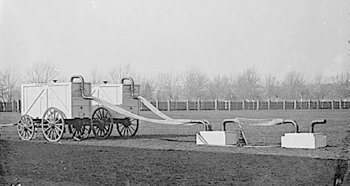

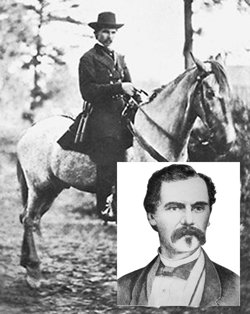
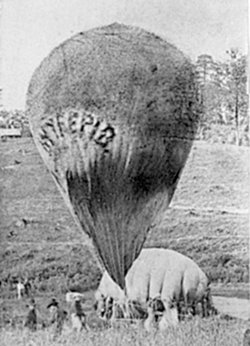
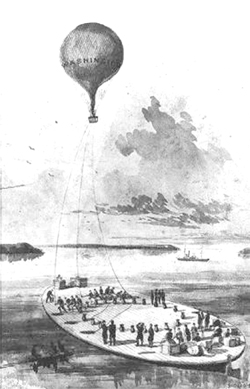
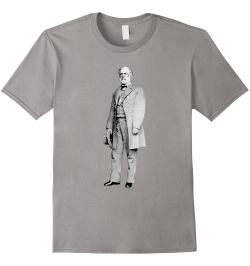
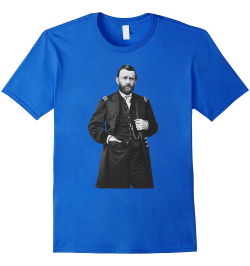

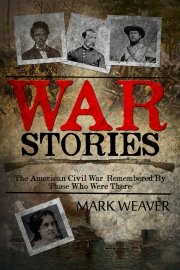
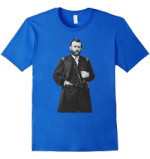
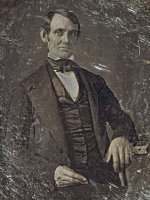
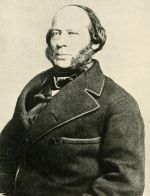
New! Comments
Have your say about what you just read! Leave me a comment in the box below.